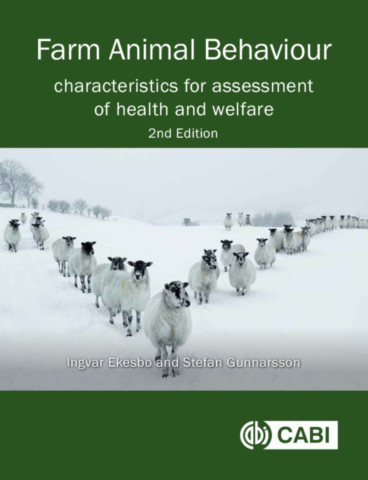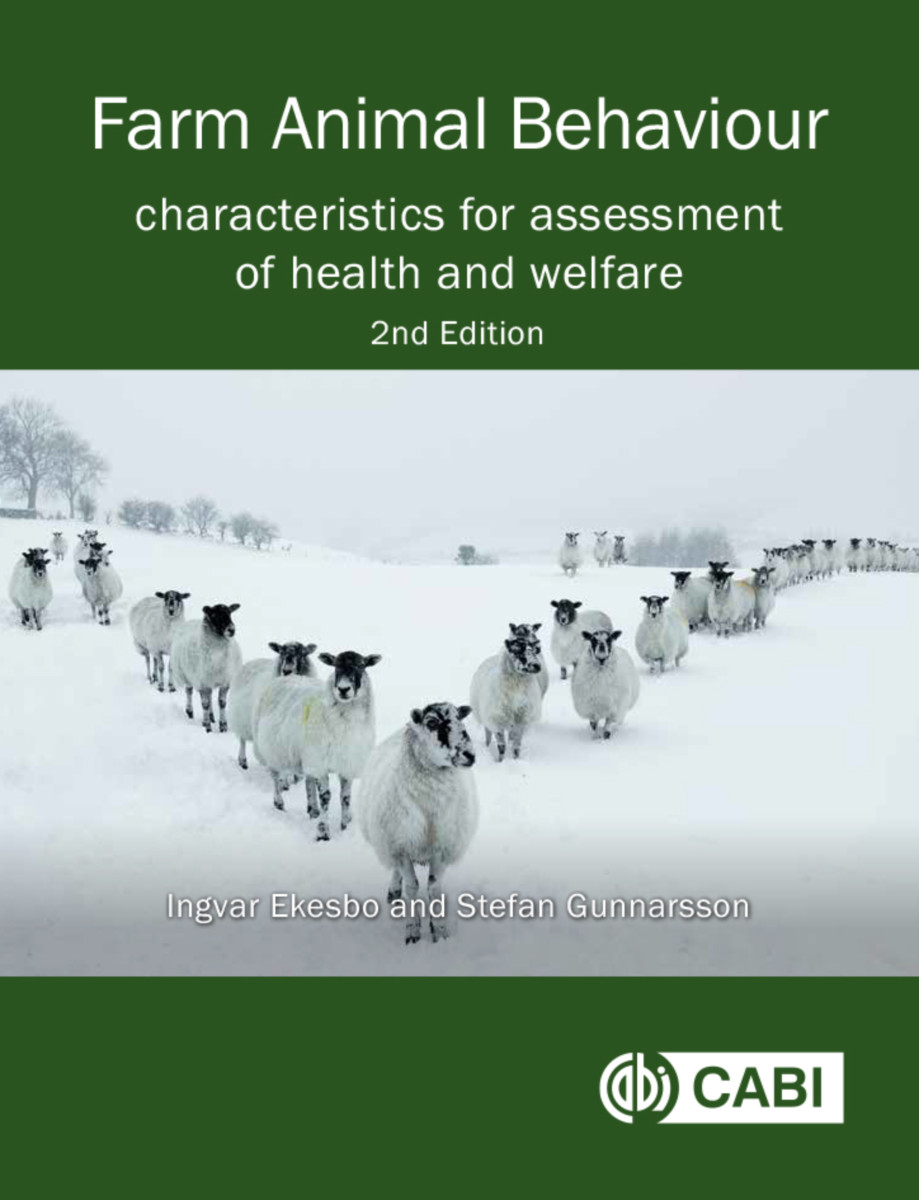CABI is pleased to offer HSVMA members a discount to support the work of the HSVMA. With more than 100 years of scientific research, CABI’s publishing brings together knowledge, information and evidence based research to help researchers and practitioners complete their academic and professional development. CABI supports study, practice and development across the applied life sciences through books, eBooks, compendia and online resources, including our world renowned CAB Abstracts and Global Health.
Farm Animal Behaviour Edition 2
Characteristics for Assessment of Health and Welfare
- Publisher
CABI - Published
31st December 2018 - ISBN 9781786391391
- Language English
- Pages 360 pp.
- Size 7.5" x 9.625"
- Images 213 color illus
- Request Exam Copy
Completely updated and revised, and with a new author team, this second edition of Farm Animal Behaviour continues to provide essential information on normal and stereotypic behaviors in a wide variety of farm animals to help in the assessment and diagnosis of their welfare.
- Comprehensive coverage of a range of farmed animals from horses, cattle, sheep, goats and pigs through to domesticated poultry, deer, ostrich and many other species
- Innate, learned and social behaviors described together with activity, vision and hearing builds a picture of normal behaviors presented in a clear and consistent way for each species
- Stereotypical behaviors, injuries and disease, resulting from improper management practices, outlined in detail
- Quality color illustrations and key information readily found for those in a busy clinical setting
- Contributions from key expert authors
Farm Animal Behaviour, second edition, provides a comprehensive yet concise background for all students, postgraduates and practitioners in veterinary medicine, animal science welfare and ethology.
“[This edition] provides a comprehensive collection of useful information on normal as well as stereotypical behavior in most domesticated mammals…and birds…and nondomesticated farm animals…. The authors do an outstanding job of organizing a broad topic. Each chapter covers 1 species, and information regarding the behavioral characteristics of each species is presented in a consistent manner. Sensory, social, and innate and learned behaviors as well as behaviors associated with perceived danger or peril, active and resting states, mating and parturition, domestication, health, and welfare are discussed for each species. This allows readers to compare behaviors across species or to access specific information with ease….This book will be beneficial as a textbook in farm animal behavior courses for veterinary or animal science students. This book will also be a valuable resource for veterinarians and animal scientists currently working with farm animals who wish to update their knowledge in this area as well as laypeople who are interested in the welfare of animals but have not received any formal animal behavior training.”
- JAVMA
Preface to Second Edition
PART 1: DOMESTICATED MAMMALS
1. Horse (Equus caballus)
2. Swine (Sus scrofa)
3. Rabbit (Oryctolagus cuniculus)
4. Cattle (Bos taurus)
5. Sheep (Ovis aries)
6. Goat (Capra hircus)
PART 2: DOMESTICATED BIRDS
7. Hen (Gallus gallus domesticus)
8. Turkeys (Meleagris gallopavo)
9. Geese (Anser anser f. domesticus, Anser cygnoides f. domesticus)
10. Domestic Ducks (Anas platyrhynchos) and Muscovy Ducks (Cairina moschata)
PART 3: NON-DOMESTICATED FARMED ANIMALS
11. Deer: Fallow Deer (Dama dama) and Red Deer (Cervus elaphus)
12. Ratites: Ostrich (Struthio camelus), Rhea or Nandu (Rhea americana) and Emu (Dromaius novaehollandiae)
Glossary
References



